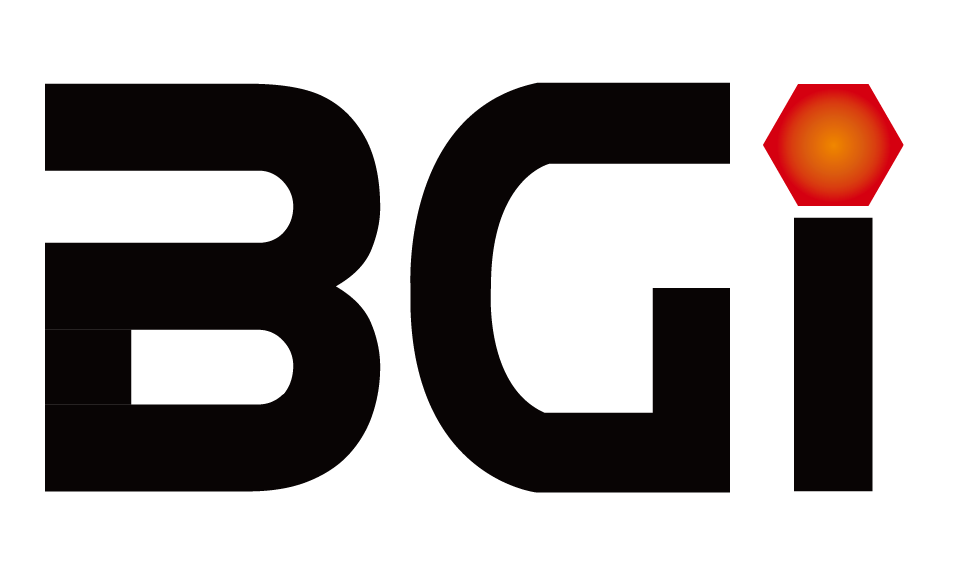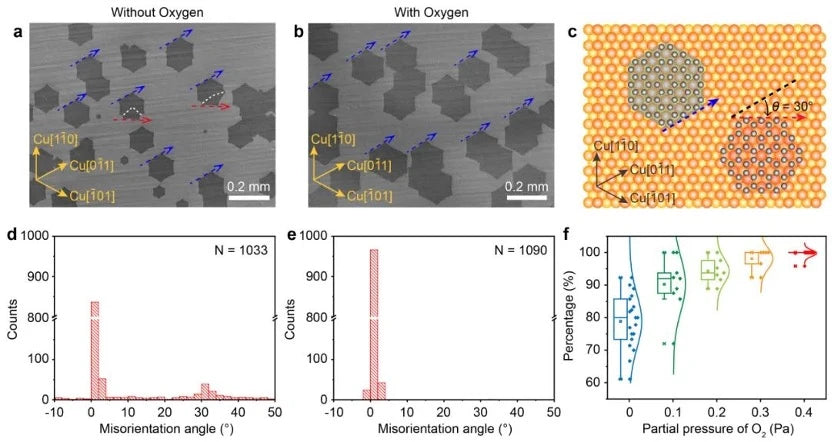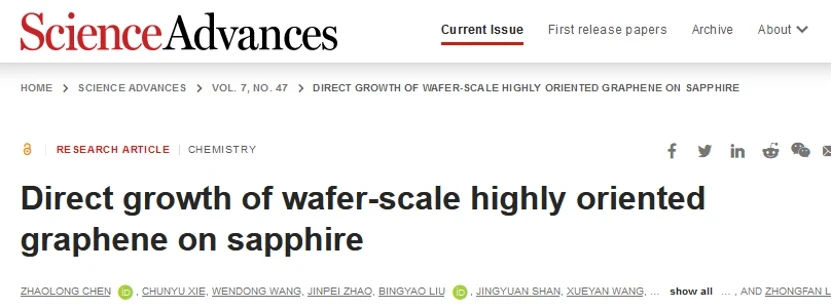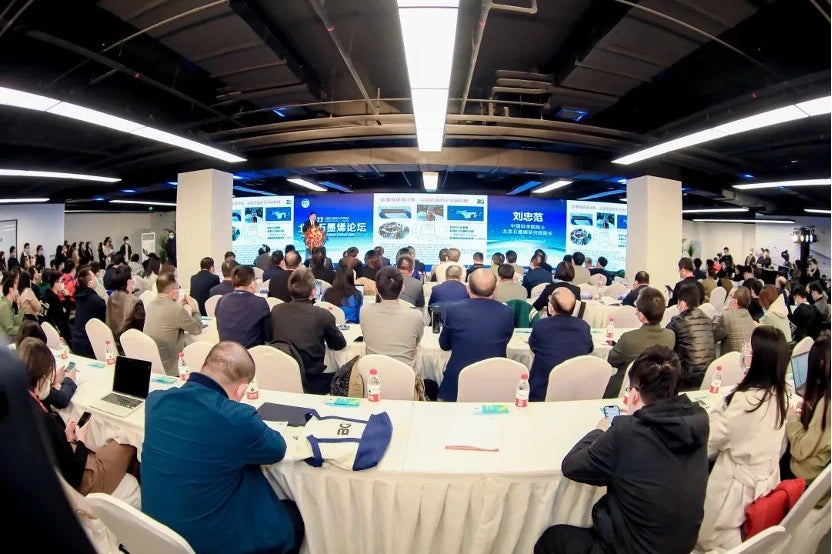The team led by Academician Liu Zhongfan, in a groundbreaking study published in ACS Nano, has achieved a monumental milestone in the electronics industry with the successful epitaxial growth of A3-sized graphene single-crystal films. This development is poised to be a cornerstone technology for high-end applications of emerging two-dimensional materials like graphene, mirroring the pivotal role of epitaxial growth techniques in semiconductor single crystals over decades.
Graphene's journey towards revolutionizing electronic applications takes a significant leap forward with the Beijing Graphene Institute (BGI) team's innovative research. The key to achieving oriented growth of graphene lies in the preparation of symmetrically matched single-crystal substrates and the strong interaction between graphene and its substrate. Cu(111), with its hexagonal symmetry matching graphene's and a minimal lattice mismatch of 3% to 4%, has been identified as the most promising substrate for graphene epitaxy.
However, the path to large-scale, defect-free graphene films is fraught with challenges. Commercially available metal foils are polycrystalline with micrometer-sized grains. Prior efforts by Liu Zhongfan's group, in collaboration with Peng Hailin's team, made strides by preparing decimeter-level single-crystal copper foils with high-index crystal planes using static temperature gradient annealing and thermal stress control (Adv. Mater. 2020, 32, 2002034). Yet, the recrystallization of metals is complex and influenced by temperature, atmosphere, and stress, particularly when scaling up, facing hurdles like insufficient driving force for grain boundary migration, limited single-crystal size, and uncontrollable crystal planes.

A significant proportion of graphene grown on Cu(111) substrates still exhibits a 30° rotation angle, complicating the control of graphene orientation during scaling. Addressing these challenges, the BGI General Graphene Film Project Team has made significant advances in both the preparation of large-size Cu(111) single-crystal foil substrates and the control of graphene's epitaxial orientation. They have developed a technique for strong texture-induced abnormal grain growth of Cu(111), successfully preparing A3 (0.42×0.3m^2) size single-crystal Cu(111) foil substrates. In collaboration with Professor Li Zhenyu's group from the University of Science and Technology of China, the team has also discovered the role of trace oxygen in enhancing the interaction between graphene edges and the Cu(111) substrate and eliminating 30° rotational twins in graphene, achieving batch growth of graphene with a high orientation uniformity (99.9%).

This achievement marks a significant technological breakthrough in the scalable production of large-area, misorientation-free graphene films, setting the stage for new innovations in electronic devices and materials science.






Leave a comment
All comments are moderated before being published.
This site is protected by hCaptcha and the hCaptcha Privacy Policy and Terms of Service apply.